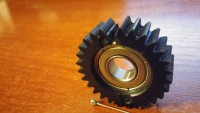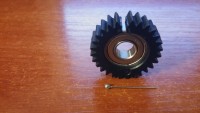The topic is archival, but I will write for posterity how to glue polyolefins that are by definition difficult to glue efficiently and with good results in home and workshop conditions. Anyway, even ABS with modifiers and other plastics of unknown composition.
First of all, you have to increase the wettability, i.e. activate the surface 2-3 times (up to 70mN / m). This requires highly active oxygen to break the hydrogen bonds with carbon and achieve brilliant surface wettability. The first way is propane with oxygen (if you have cylinders at hand) and quickly dabbing with a strongly reducing flame several times over the glued element. Works, but not very aesthetically pleasing.
The second method, which I use for PP, PE, PET, Mylar with trafo etc .. is to buy for a few pennies for ali (PLN 40-50) such a charge for the ozonator:
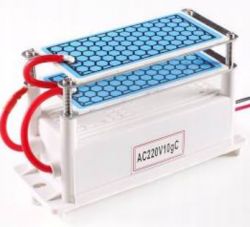
The next step is to connect, without air (for a moment) and at a distance of 1 mm from the surface of the plate, on which there are corona discharges of the glued material. The time of 2 minutes will be great, it can be done in 4 steps of 30 seconds. with intervals for cooling down (although in such a single chord nothing will happen).
Now we have broken it
highly active oxygen hydrogen bonds (probably 1.5eV) so we have total wettability as in the picture on the left:

It's time to get down to the glue
personally for "plastics" - I advise to use methacrylic adhesives because the joint will be stronger in the joint than the native material, by melting it. These adhesives are expensive, but you can buy very good adhesives for pennies ali.
Look like this:
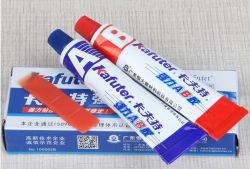
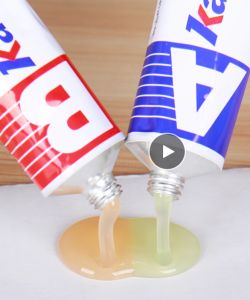
The brand is a kafuter (there are promos - 2 sets of 70g for PLN 29), this is it
very strong two-component methacrylic adhesive, much stronger than epoxy adhesive, especially for plastics.
Of course, after the corona discharge treatment, we can glue with MX hybrid adhesives and others if we want to leave the possibility of breaking the joint in the future.
We never sand the surface
before gluing only before "ozonation" we clean with IPA or acetone and we can pass sandpaper before "ozonation" (although it is not necessary!)

If we sand down before gluing, we will spoil the effect of the oxidized micro-layer and we will get something like the left side: (the right side is perfect!)
Well, that's what I wanted to add. It's hard for me to compare the shear strength with a chemical activator, but foreign forums report that the methods of activation with corona discharge or low-pressure plasma are the best and most durable. In practice, it works great for me



